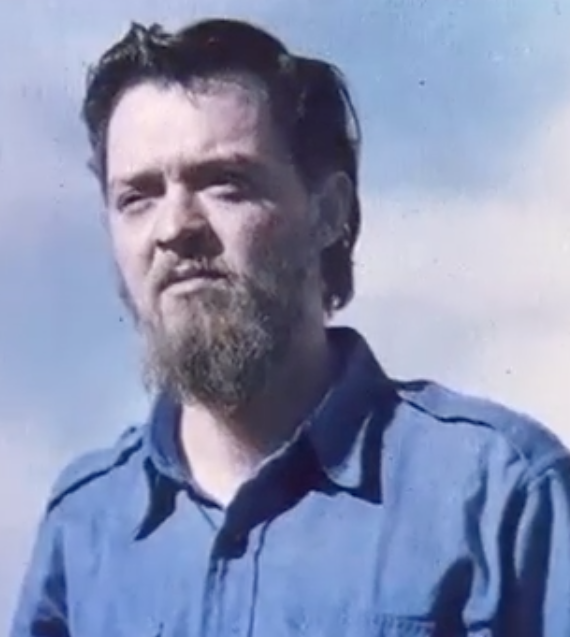Danny Foster and the Wilkes-Vostok Traverse |
 Loudonville native Danny Foster (1937-2014) was the first American to arrive in Vostok, Antarctica--known as the coldest place on earth. While serving in the United States Navy, Foster became interested in meteorology and was soon assigned to research treks in both the arctic and antarctic polar regions. Foster often conducted research on these treks, serving as the team's weather technician and meteorologist alongside an international cast of scientists including seismologists, geophysicists, glaciologists and supporting engineers, mechanics, and radio operators.
Loudonville native Danny Foster (1937-2014) was the first American to arrive in Vostok, Antarctica--known as the coldest place on earth. While serving in the United States Navy, Foster became interested in meteorology and was soon assigned to research treks in both the arctic and antarctic polar regions. Foster often conducted research on these treks, serving as the team's weather technician and meteorologist alongside an international cast of scientists including seismologists, geophysicists, glaciologists and supporting engineers, mechanics, and radio operators.By 1961 the United States Antarctic Program (USARP) joined forces with the Australian National Antarctic Research Expedition (ANARE) to expand ANARE's Wilke's Station into the largest base in Antarctica. In addition to construction, USARP agreed to provide fuel drops to support antarctic research expeditions.
In 1962, a research party lead by New Zealand's Robert Thomson, navigator, set out across uncharted territory for one of the most daring expeditions in over fifty years. Thomson's team would conduct scientific studies between Wilkes Station and the inland Russian base known as Vostok. The path was uncharted and included traversing heavily crevassed regions behind the Totten glacier. Danny Foster would join the expedition as the lone American, joining Thomson and four Australians. They set out with two Caterpillar D4 tractors, two Weasel oversnow vehicles, and a sled caravan. Only one tractor, one weasel, and the caravan would complete the trip.
The team set out on September 17, 1962 and for nearly two months traversed across "untravelled waste of Polar ice-cap." Daytime temperatures presented a balmy -100° fahrenheit, with nighttime dropping an additional 30° (not including wind). Foster spent the nights in the caravan, an uninsulated plywood shanty on sleds. A small oil cooking stove and down-feather sleeping bags on plywood shelves provided little comfort. The toilet paper roll froze solid, as did a bottle of high-proof brandy that Foster brought along in hopes of keeping him warm. Each night the caravan, dubbed the "Aneata," would freeze over into a solid block of ice and the oil cooking stove would have to be fired up in order to attempt to loosen the icy grip. Foster did, however, manage to invent an early electronic hand-warmer which he could stuff into his jacket.
Finally, after 900 miles, the expedition reached Vostok--a region so desperate and lonely it had been dubbed the Ice Maiden of Antarctica, the Pole of Inaccessibility. It was dark when the team arrived, and the base appeared abandoned...until a shadowy figure appeared. Thomson reported that it did not move, but gazed with ferocious eyes at the intruders--until Foster approached it, raised his lantern, and revealed that the looming figure was a large portrait of Vladimir Lenin. The base was abandoned, and in haste too. The Russians had just been sitting down to dinner when their transport plane landed and required immediate take-off, so dinner was abandoned. Their meal of steak, potatoes, and onions had frozen immediately. Radioing the Russians at Mirny Station about their arrival, the Soviets replied: "Help Yourself!" The crew re-cooked the meal and used the stove to thaw the ice cream that had been left sitting on the table.
After two weeks of conducting tests at Vostok (elevation of 11,444 feet), the team turned around and spent another two months re-crossing the 900 miles of Polar wasteland before arriving back in Wilkes Station. Although polar expeditions no longer received the international frenzy of attention that 18th and early 19th century expeditions stirred, the international science community hailed the Wilkes-Vostok Traverse. Thomson would go on to write a book, "The Coldest Place on Earth" recounting their journey, while Foster eventually became the head of overseas operations for the NOAA's National Weather Service. In honor of Foster's vital contributions to the team and to antarctic research as a whole, a conspicuous rock bluff surmounting the shore in the Southwest part of Herring Island, in the Windmill Island chain, was named Foster Bluff.
Watch the film Vostok 900 (1962) based on the Wilkes-Vostok Traverse, courtesy the Australian Antarctic Program.
|
|



